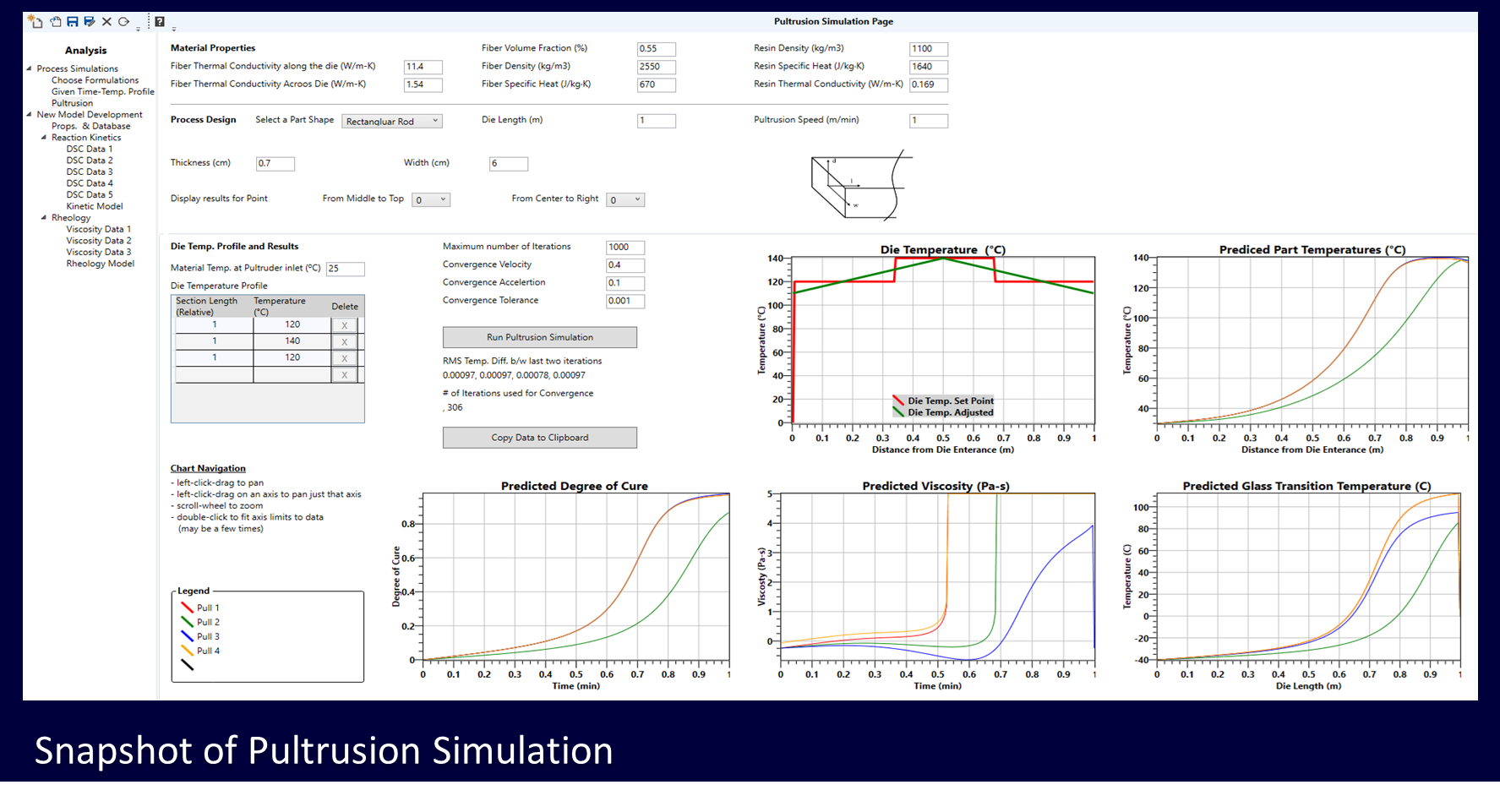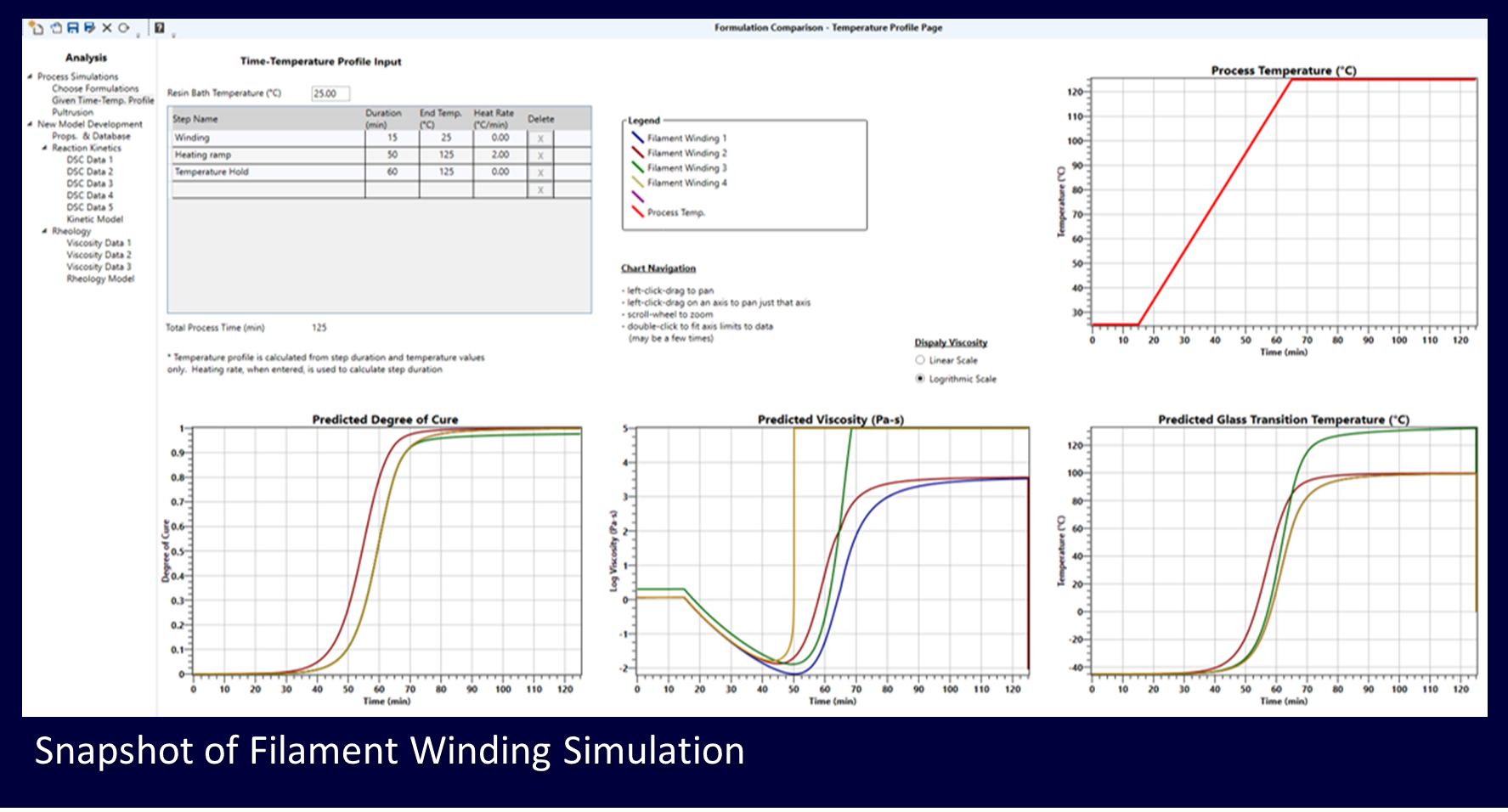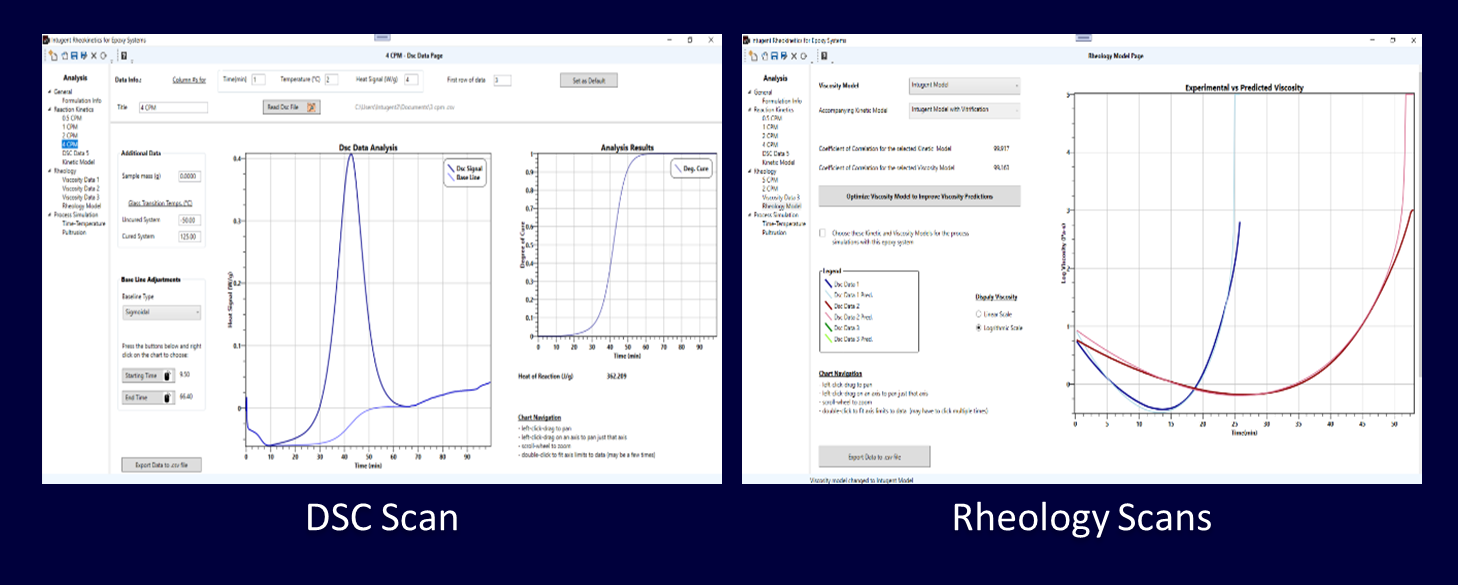Increase your odds of being successful at the very first commercial scale application of thermoset polymer systems by simulating the process with I-Rheo. Use I-Rheo to reduce developmental times and costs. Designed by researchers with extensive experience in thermoset polymers and composites, it is based on the latest developments in the materials science of thermoset polymers. A searchable database allows researchers to share the kinetic and rheology models and simulate commercial application processes. I-Rheo’s intuitive front-end and powerful optimization engine makes it easy for everyone to use it. Technical sales staff can use I-Rheo to identify systems with right mechanical properties and processing characteristics. No background in mathematical modeling is needed. Key features of the software are described below.


